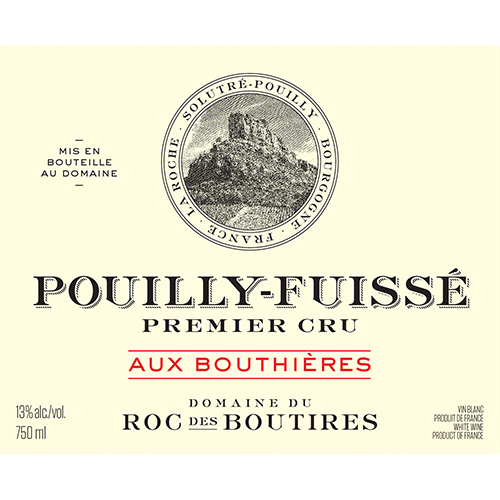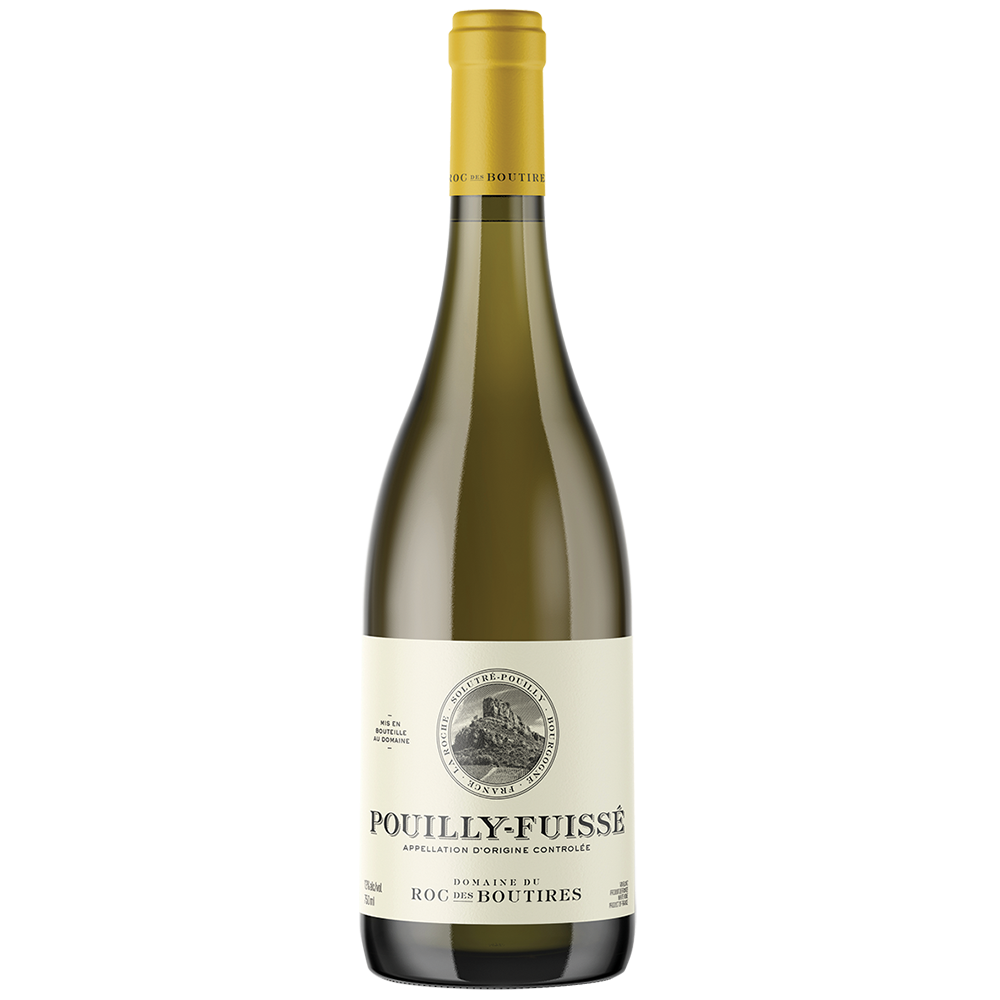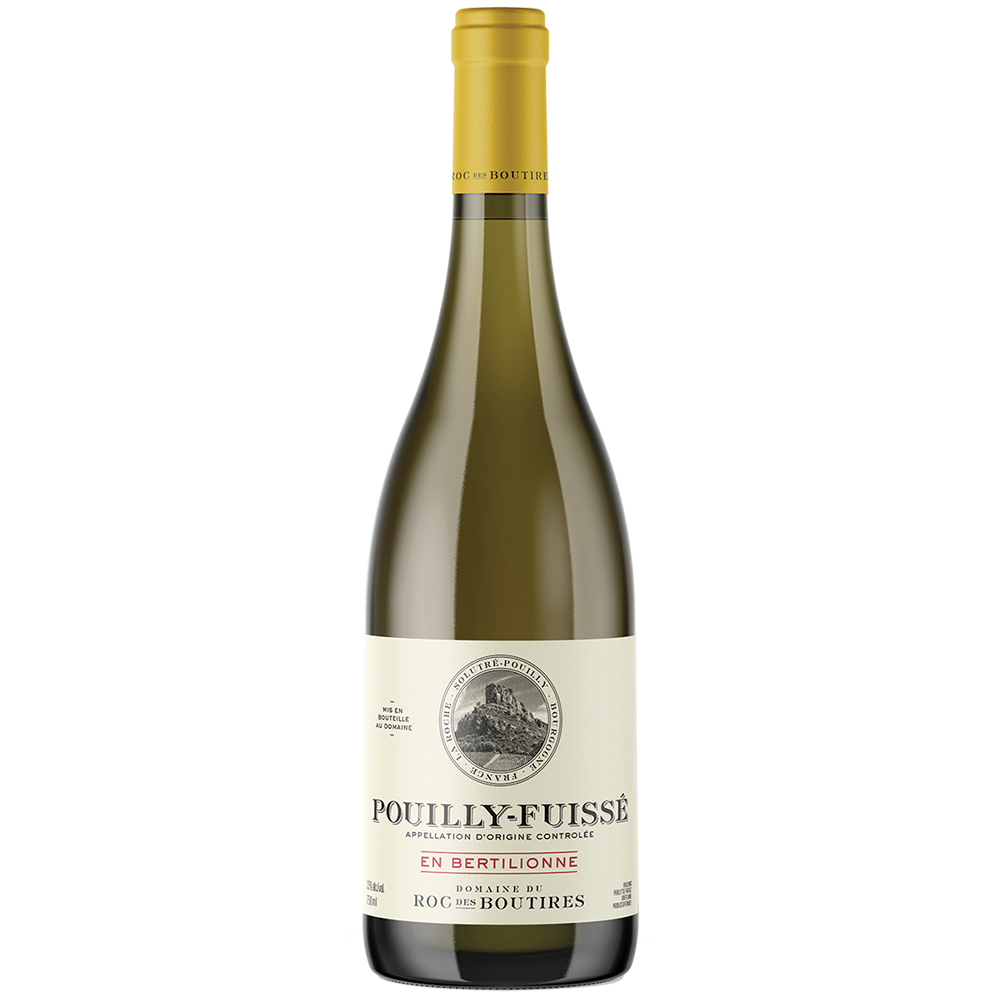
Domaine du Roc des Boutires
Pouilly-Fuissé Premier Cru Aux Bouthières
Just outside the hamlet of Pouilly, Aux Bouthières PouillyFuissé Premier Cru marks the end of a long, premier crugraced slope that starts just outside Fuissé. The vineyard itself lies just north of the eponymous hamlet of Pouilly, and sits at the very northern end of an east-facing slope that runs for roughly two kilometers (1.2 miles) from Fuissé in the south and boasts a number of premier cru vineyards along its length. Aux Bouthières was one of 22 sites promoted to Premier Cru status in 2020.
Exclusively coming from the terroir ‘Aux Bouthières’ with clay soils interlaced with shale. The Domaine works with a 0.65 hectare plot of ‘vieilles vignes’ Chardonnay, located at the southern end of Bourgogne, are planted between 250 and 500 meters in altitude, higher than the others AOC from Bourgogne. Thus, they provide both maturity and freshness to the wines.
- Region
- Bourgogne
- Appellation
- Mâconnais
- Sub-Appellation
- Pouilly-Fuissé Premier Cru AOP
- Varietal Composition
- Chardonnay
- Aging
- 12 months in 50% oak barrels and 50% in stainless steel.
- Alcohol
- 13%
The brilliant color has lovely golden, sparkling highlights. A unique concentration is immediately apparent in the glass. The bouquet is highly complex, with aromas of orange peel, citrus, jasmine and a touch of saline on the finish, reminiscent of the nobility of the cru. The palate is round and unctuous, underpinned by salivating acidity. This is a racy, multi-dimensional wine that expresses the grandeur of this emblematic locality.
Wine Enthusiast
93 Points
2022
"Fresh and vibrant, this wine opens with lively aromas of ripe lemon zest, white tea, lemongrass and an ocean breeze. On the palate, the wine is beautifully textured, clinging to stone minerality, with straw and pithy notes that create a perfect framework for light citrus and subtle smokiness. Delicate, elegant and drinking wonderfully now"
— Anna-Christina Cabrales, 2025




